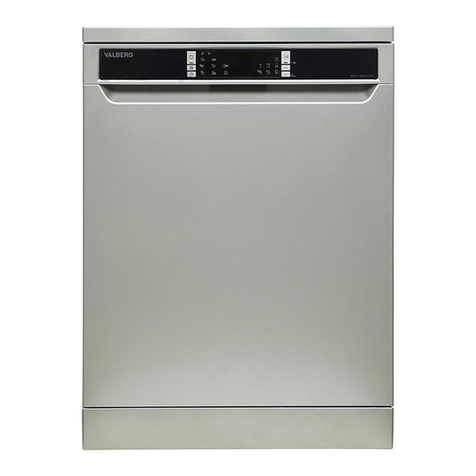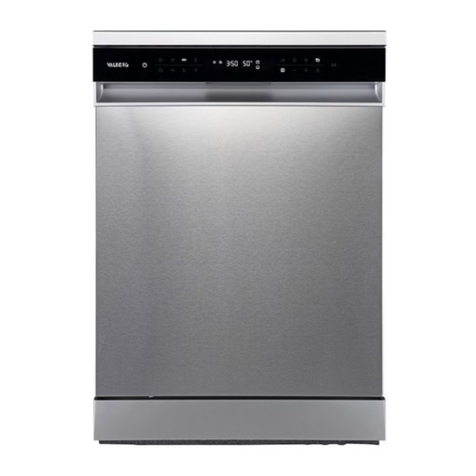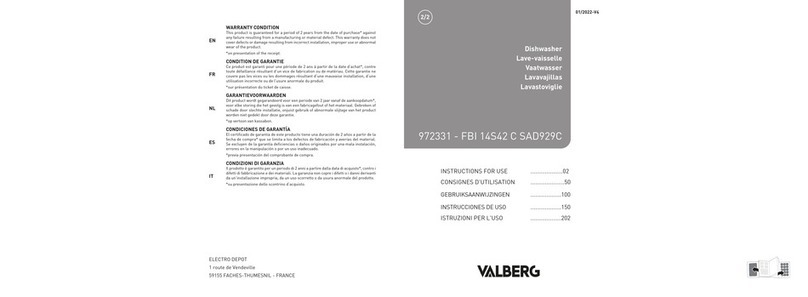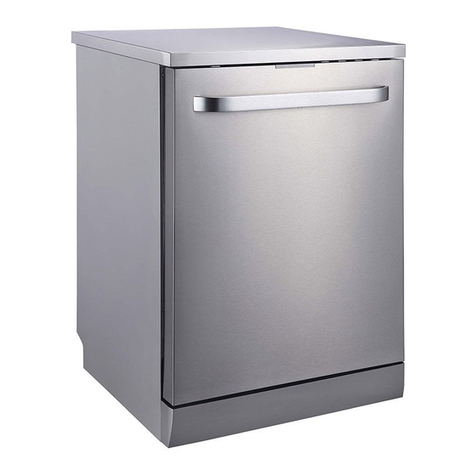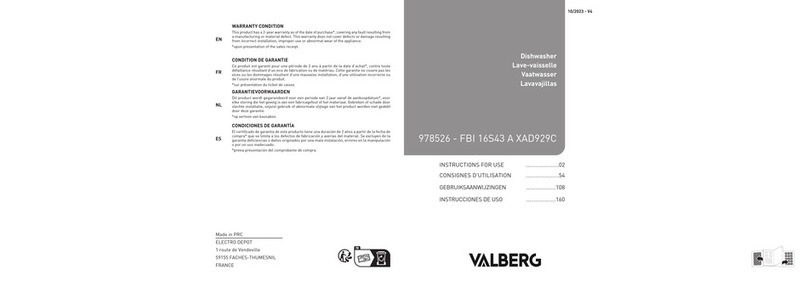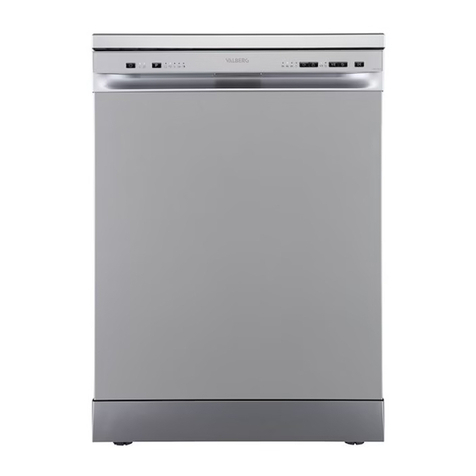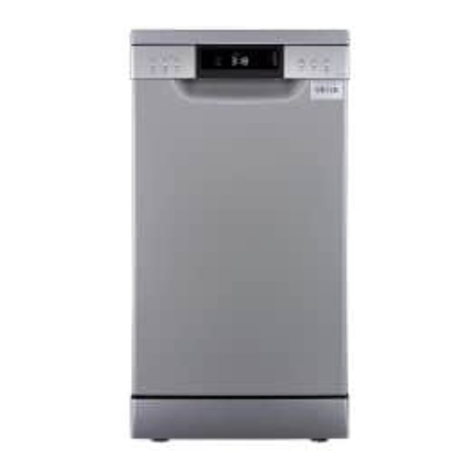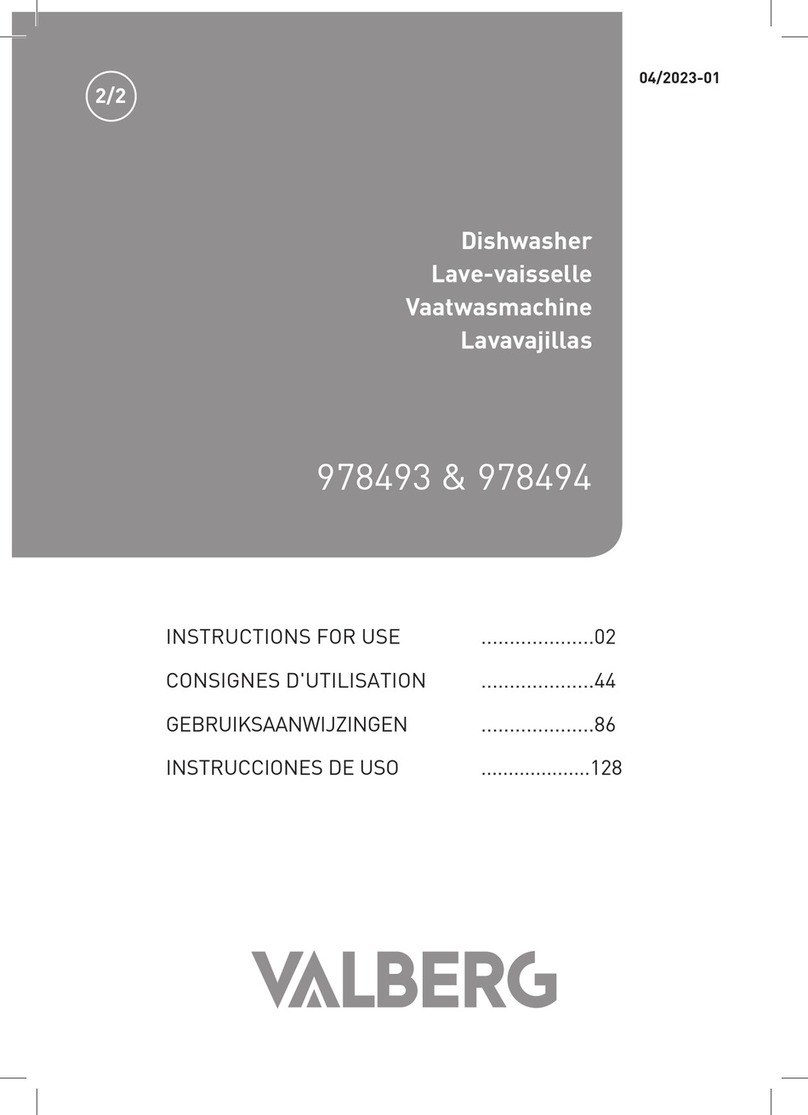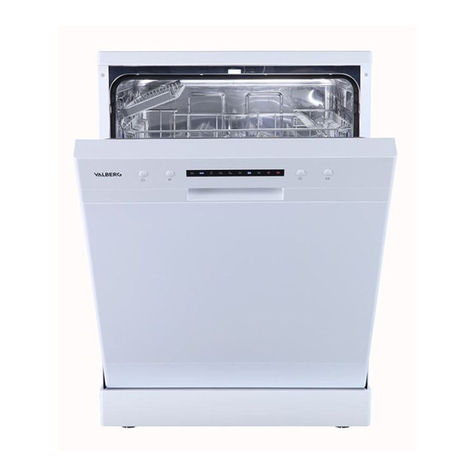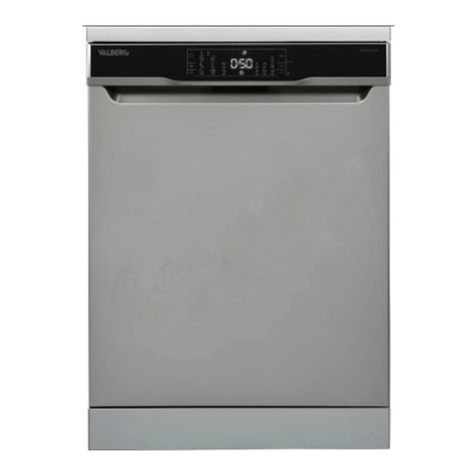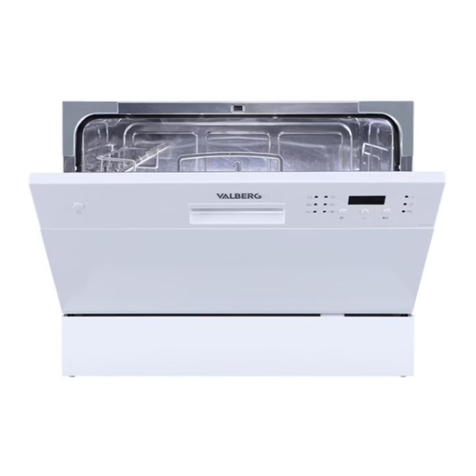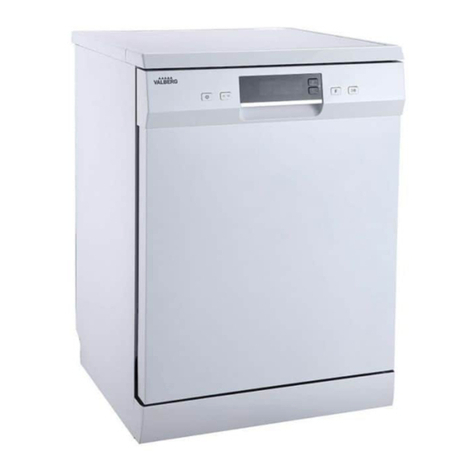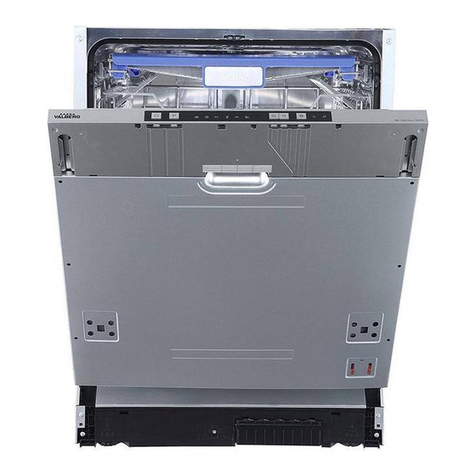
8
Installation instruction
WARNING
Electrical Shock Hazard
•
Disconnect electrical power before installing dishwasher.
• Failure to do so could result in death or electrical shock.
•
The installation of the pipes and electrical equipments
should be done by professionals.
Installation preparation
•
The installation position of dishwasher should be near the existing water inlet tap and
drain outlet and power socket.
• One side of the cabinet sink should be chosen to facilitate the connection of drain hose
of the dishwasher.
Positioning the Appliance
Position the appliance in the desired location. The back should rest against the wall behind
it, and the sides, along the adjacent cabinets or wall. The dishwasher is equipped with water
supply and drain hoses that can be positioned to the right or the left to facilitate proper
installation.
About Power Connection
WARNING
For personal safety:
• Do not use an extension cord or an adapter plug with this
appliance.
•
Do not, under any circumstances, cut or remove the
earthing connection from the power cord.
Electrical Requirements
Please look at the rating label to know the rating voltage and connect the dishwasher to the
appropriate power supply. Use the required fuse 10 amp, time delay fuse or circuit breaker
recommended and provide separate circuit serving only this appliance.

